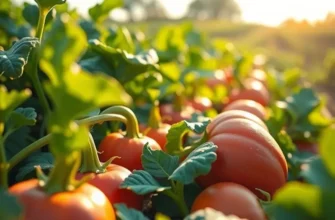Seasonal eating is not just a trend; it’s a lifestyle that connects the way we eat with the natural cycles of food production. By choosing foods that are in season, we not only support local farmers but also enjoy fresher and more flavorful produce. This article delves into the basics of seasonal eating, exploring its benefits and offering practical insights on how you can incorporate it into your daily life.
Understanding Seasonal Eating

Seasonal eating encompasses the philosophy of consuming foods that naturally grow at specific times of the year in one’s local area. This practice is not a modern diet trend but rather a return to traditional ways of eating, deeply connected to the cycles of nature. Its significance lies in environmental sustainability, economic viability, and enhanced nutrition. Understanding these components is vital to appreciating the full breadth of benefits that seasonal eating offers.
One of the primary benefits of seasonal eating is its positive impact on the environment. Consuming foods that are in season locally reduces the need for extensive transportation, significantly diminishing the carbon footprint associated with food distribution. This practice champions the principle of ‘food miles,’ emphasizing the reduction of travel distance from farm to fork. In doing so, it also minimizes the need for energy-intensive storage and refrigeration, further lowering environmental impact.
Health benefits are another critical aspect. Foods harvested in their natural season boast peak nutritional content, offering more vitamins, minerals, and antioxidants compared to out-of-season varieties. For instance, summer tomatoes are not just juicier; they are more nutrient-rich than those grown during colder months in artificial conditions. By consuming produce at its nutritional best, one can bolster their health and wellbeing, tapping into the high bioavailability of nutrients.
Economically, seasonal eating supports local farmers and the community by channeling consumer demand towards local produce. This creates a more robust local economy and encourages sustainable agricultural practices. Farmers benefit from fairer prices, as the reduced need for infrastructure and intermediaries lowers production costs. Consumers also enjoy fresher, often more affordable produce.
Additionally, seasonal eating aligns with broader sustainable practices. It complements waste reduction strategies by promoting the consumption of crops during their abundant harvest periods, thus reducing reliance on long-distance supply chains that contribute to food waste. For those interested in integrating sustainable practices into their kitchens, exploring eco-smart kitchen storage can be an excellent complement to seasonal eating.
Seasonal eating also fosters a deeper connection with local traditions and biodiversity. As individuals engage more with what their regions naturally produce, they develop a greater appreciation for native crops and traditional recipes, thus preserving cultural heritage. This connection also enhances food security, as reliance on local produce can be more resilient in the face of global food supply disruptions.
Incorporating seasonal eating into one’s lifestyle does not have to be daunting. Start by familiarizing yourself with what grows in your area each season; local farmers’ markets can be treasure troves of information. Embrace cooking with a variety of seasonal foods, experimenting with recipes that honor the natural flavors of the season. This way, one can support their health, the environment, and their community all at once.
Practical Tips for Seasonal Eating

Incorporating seasonal ingredients into your meals can help you connect more closely with your food and its sources. Here’s how you can start shifting towards a more seasonal approach to your diet.
Start by visiting local farmers’ markets. These markets offer a feast for the senses with vibrant, fresh produce that reflects the current season. Talk to the farmers; they can provide you with insights into what’s in season and how to best prepare these ingredients. Seasonal farmers’ markets not only allow you to engage with local producers but also help you discover new and exciting fruits and vegetables.
Subscribing to a Community Supported Agriculture (CSA) box is another effective way to bring seasonal produce into your kitchen. Many CSA subscriptions offer a weekly box of produce that is locally grown and varies according to the harvest cycles. This surprise element encourages creativity, as you’ll often find yourself working with unfamiliar ingredients.
When planning your meals, focus on what’s currently growing. Spring ushers in bright greens like asparagus and peas, perfect for a simple stir-fry or a light pasta dish. In summer, enjoy the sweetness of berries, melons, and succulent tomatoes as part of refreshing salads or smoothies. Fall brings cozy comfort foods such as pumpkins, squash, and hearty root vegetables—ideal for roasting or incorporating into soups. During winter, take advantage of citrus fruits, as their zest can brighten any dish.
Let’s explore a couple of simple recipes for each season:
Spring: Try a lemon asparagus risotto, where fresh asparagus adds a crisp texture to creamy rice, complemented by the zing of lemon.
Summer: Enjoy a classic caprese salad, featuring juicy tomatoes, creamy mozzarella, fresh basil, and a drizzle of balsamic glaze.
Fall: Roast a medley of butternut squash and sweet potatoes with rosemary and olive oil for a nourishing side dish.
Winter: Create a warming citrus salad using orange and grapefruit segments, mixed greens, fennel, and a honey mustard dressing.
By incorporating seasonal ingredients, you embrace not only the freshness and flavor but also the nutritional benefits they offer at their peak. As you become more accustomed to seasonal eating, encourage experimentation. Balance flavors and try different cooking techniques to explore the versatility of each ingredient.
Remember, seasonal eating is an ongoing practice rather than a strict regime. Enjoy the process of discovery and allow your culinary repertoire to grow with the seasons. To further simplify your seasonal meal planning, consider adopting batch cooking strategies. For more tips on effortlessly integrating this approach into your routine, explore this resource on minimal prep dinner ideas.
Through seasonal eating, you cultivate a deeper appreciation for food, reduce your environmental impact, and add variety to your diet. So why not embrace the dynamic world of seasonal produce and savor what’s fresh every time of the year?
Final words
Embracing seasonal eating not only enriches your diet but also fosters a deeper connection to nature and local communities. By choosing to eat with the seasons, you can enjoy fresher flavors, higher nutritional values, and the satisfaction of supporting sustainable agricultural practices. As you explore this approach, you’ll discover that seasonal eating adds variety and excitement to your meals, making each season an opportunity for new culinary adventures. Take the plunge into this refreshing lifestyle and witness the delicious difference it makes.








